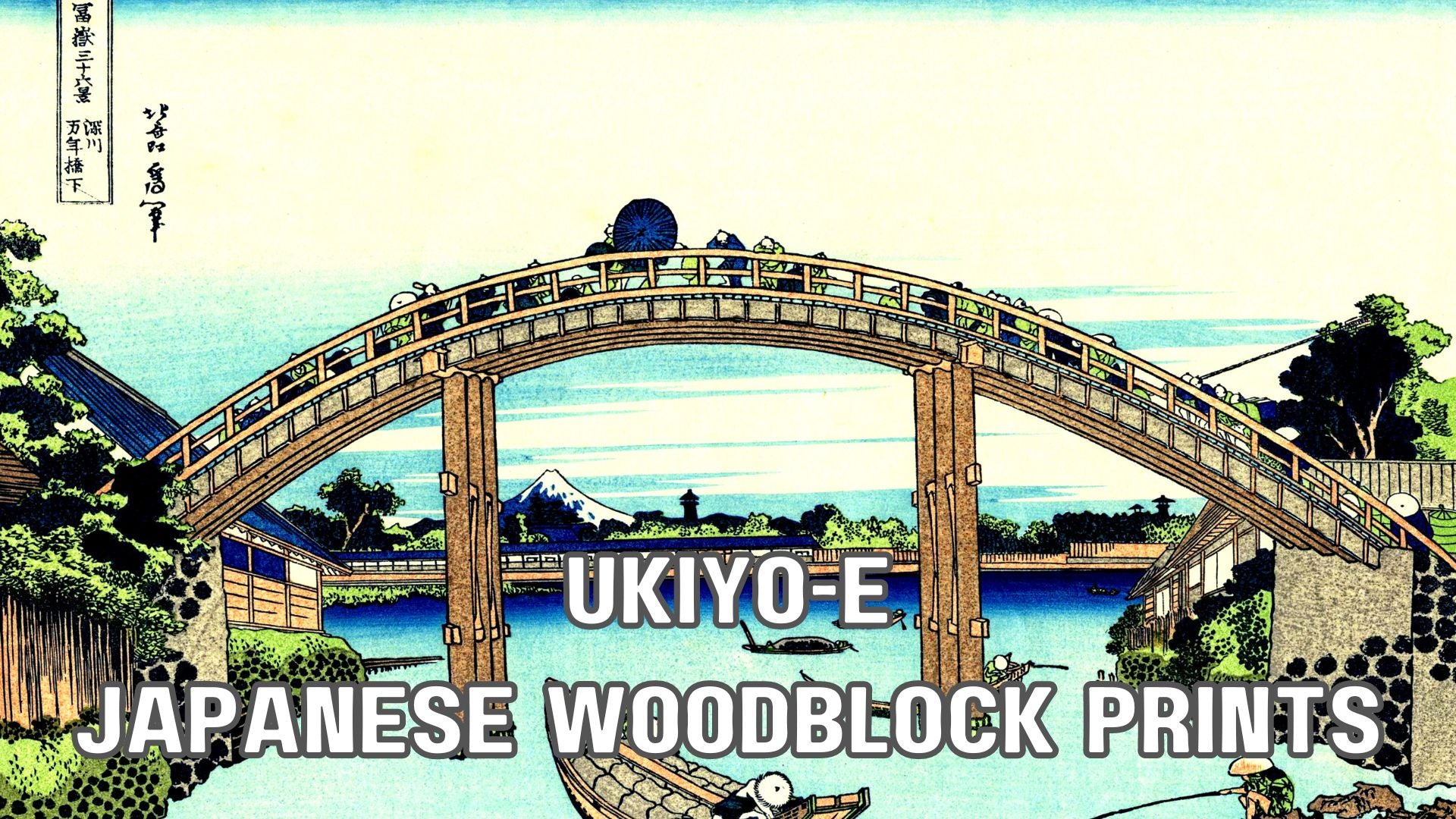Table of Contents:[hide]
Ukiyo-e, a genre of Japanese art that thrived from the 17th to the 19th centuries, offers a captivating glimpse into the cultural richness and aesthetic sophistication of historic Japan. From its emergence in the bustling city of Edo (modern-day Tokyo) to its influence on Western art movements, ukiyo-e has left an indelible mark on the world of visual arts.
Exploring the Origins and Evolution
Pre-history
Ukiyo-e's roots can be traced back to the vibrant cultural milieu of Edo-period Japan, characterized by the rise of the chōnin class and their patronage of entertainment districts. It was during this time that artists began depicting scenes of everyday life, introducing a new perspective to Japanese art.
Emergence of Ukiyo-e (late 17th – early 18th centuries)
The early pioneers of ukiyo-e, such as Hishikawa Moronobu, laid the groundwork for the genre's development with their innovative woodblock prints. These prints captured the essence of the "floating world," portraying a range of subjects including beauties, actors, and landscapes.
Colour Prints (mid-18th century)
The introduction of full-color prints in the mid-18th century marked a significant milestone in ukiyo-e's evolution. Artists like Suzuki Harunobu pioneered complex color designs, ushering in an era of artistic experimentation and refinement.
Peak Period (late 18th century)
The late 18th century witnessed a flourishing of ukiyo-e production, with artists like Torii Kiyonaga and Utamaro creating iconic portraits and scenes that epitomized the beauty and elegance of the era. Despite economic challenges, ukiyo-e thrived creatively, producing works of unparalleled quality and sophistication.
Influence and Legacy
Ukiyo-e's influence extended far beyond the shores of Japan, shaping the aesthetic sensibilities of Western artists during the 19th century. The mesmerizing landscapes of Hokusai and Hiroshige captivated European audiences, giving rise to the Japonisme movement and influencing luminaries such as Vincent van Gogh and Claude Monet.
Preserving a Cultural Treasure
Despite the decline of traditional ukiyo-e production in the late 19th century, efforts to preserve and celebrate this rich artistic heritage continue to this day. Museums and collectors around the world safeguard priceless ukiyo-e prints, ensuring that future generations can appreciate their beauty and significance.
Famous Ukiyo-e Artists
Utagawa Kuniyoshi
Utagawa Kuniyoshi (1797–1861) was a renowned Japanese ukiyo-e artist known for his dynamic and imaginative woodblock prints. His works often featured bold compositions, vibrant colors, and fantastical themes, including legendary warriors, mythical creatures, and scenes from folklore. Kuniyoshi's innovative style continues to influence artists worldwide to this day.
Ando Hiroshige
Ando Hiroshige (1797–1858), also known simply as Hiroshige, was a prominent Japanese ukiyo-e artist celebrated for his exquisite landscape prints. Renowned for his mastery of color and composition, Hiroshige's works captured the beauty of nature and everyday life in Edo-era Japan, influencing generations of artists globally.
Katsushika Hokusai
Katsushika Hokusai (1760–1849) was a prolific Japanese ukiyo-e artist, best known for his iconic woodblock print "The Great Wave off Kanagawa." A master of diverse subjects and styles, Hokusai's innovative approach and unparalleled skill left an indelible mark on the art world, inspiring countless artists across generations.
Suzuki Harunobu
Suzuki Harunobu (1724-1770) was a pioneering figure in Japanese ukiyo-e art, renowned for his mastery of full-color woodblock printing. His works often depicted elegant women and seasonal motifs with delicate brushwork and vibrant colors. Harunobu's contributions helped shape the development of ukiyo-e and influenced subsequent generations of artists.
Conclusion: A Timeless Art Form
In conclusion, ukiyo-e stands as a testament to the ingenuity and creativity of Japanese artists across the centuries. From its humble origins in Edo-period Japan to its enduring impact on global art movements, ukiyo-e remains a cherished cultural treasure that continues to inspire and captivate audiences worldwide.
Ukiyo-e FAQ's
-
What is Ukiyo-e?
- Ukiyo-e is a genre of Japanese art that flourished from the 17th to the 19th centuries. It primarily consists of woodblock prints and paintings depicting various subjects such as landscapes, kabuki actors, sumo wrestlers, flora, fauna, and scenes from history and folklore.
-
Who were the notable artists of Ukiyo-e?
- Some notable artists of ukiyo-e include Katsushika Hokusai, Utagawa Hiroshige, Kitagawa Utamaro, Suzuki Harunobu, Utagawa Kuniyoshi, and Tōshūsai Sharaku.
-
What themes are commonly depicted in Ukiyo-e art?
- Ukiyo-e artists commonly depicted themes such as landscapes, beautiful women (bijin-ga), kabuki actors, sumo wrestlers, historical events, folk tales, flora, fauna, and erotica.
-
How were Ukiyo-e prints made?
- Ukiyo-e prints were made using a woodblock printing technique. Artists would first create a design on paper, which would then be transferred onto multiple wooden blocks, each representing a different color in the final print. These blocks were then carved and inked to produce the final image on paper.
-
What is the significance of Ukiyo-e in Japanese culture?
- Ukiyo-e played a significant role in reflecting and shaping the cultural and social trends of its time. It provided a visual narrative of everyday life in Edo-period Japan and served as a form of entertainment for the masses.
-
How did Ukiyo-e influence Western art movements?
- The introduction of ukiyo-e prints to the West in the 19th century had a profound impact on Western artists such as Vincent van Gogh and Claude Monet. The unique perspectives, use of color, and attention to detail in ukiyo-e prints inspired these artists and contributed to the development of movements like Impressionism and Art Nouveau.
-
What is the condition of Ukiyo-e prints today?
- While many original ukiyo-e prints have survived the test of time and are preserved in museums and private collections worldwide, there are also contemporary artists who continue to produce ukiyo-e-inspired works. Additionally, reproductions and digital versions of ukiyo-e prints are accessible for enthusiasts and collectors.
Ukiyo-e Prints For Sale
Prints and ready to hang canvas panels of ukiyo-e woodblocks are available in a range of sizes with fast worldwide delivery.













